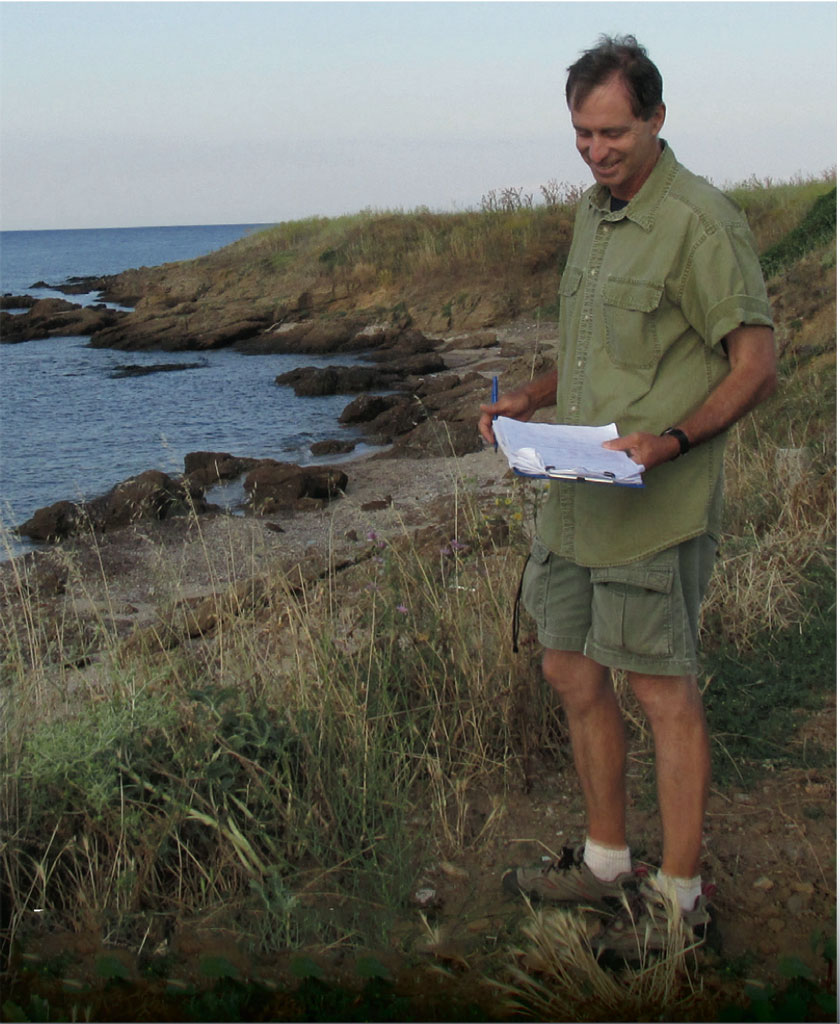IN JULY 2020, I was honored to be named the Executive Director of the Center for the Analysis of Archaeological Materials (CAAM), but what a strange time to begin! COVID-19 has forced me to carry out my duties remotely, but I look forward to Fall 2021, when in-person instruction will once again be the norm, pandemic willing.

For me, taking on the role of Executive Director is the culmination of a long journey in archaeological science. I got my first experiences as a graduate student at Boston University, where I was instructed in ceramic petrography, archaeobotany, and geophysics. Some of that training took place at the Center for Materials Research in Archaeology and Ethnology (CMRAE) at MIT, where I served after graduation as a postdoctoral fellow and supervisor of the CMRAE labs. During that time, I also learned about ancient copper-based metals from CMRAE’s Director, Heather Lechtman. In 2000, I accepted a position as Assistant Professor
of Anthropology at Yale, where I set up a ceramic petrography laboratory and trained students in the technique. In 2006, I jumped at the chance to join the faculty at Penn—and who wouldn’t, given the renowned Penn Museum and so many archaeologists spread across departments and programs?
Before long, I got involved with archaeological science at the Museum. Joyce White (Executive Director of the Institute for Southeast Asian Archaeology and then Associate Curator in the Museum’s Asian Section) approached me about teaching a course in ceramic analysis. With her grant money, we hired Marie-Claude Boileau, now CAAM Director, and the three of us ran the course from 2010 to 2011. A generous private gift enabled us to open a ceramic petrography lab in the Museum’s West Wing in January 2011. This lab became the proof of concept for a new generation of archaeometric laboratories in the Museum that ultimately led to CAAM’s launch in 2014.

CAAM has been a resounding success. Under the guidance of Marie-Claude Boileau, Museum Deputy Director Steve Tinney, and a Faculty Steering Committee, the Center has moved into newly renovated labs, assembled a wonderful team of dedicated and highly skilled teaching specialists, and established a full curriculum that has served over 2,000 students and stimulated much original student research.

Apart from helping the staff get through a difficult year, my focus is on CAAM’s future growth. We hope to physically expand our teaching and laboratory space to accommodate the remarkable interest in CAAM courses and research. Equally, I want to raise the profile of CAAM internationally because, in this short time, CAAM has become a significant center of research and teaching in archaeological science. I hope to attract affiliations with other laboratories, host workshops, and in other ways give our specialists and the Penn Museum the recognition they deserve for their outstanding work. I am excited to take on the challenge of helping CAAM achieve even greater success in the years to come.
Away from Penn, my summers are usually spent in Greece, where I’ve worked on many survey and excavation projects since 1988. I have a particular interest in the Mycenaean Greek world. Recently, I have carried out oral history projects in traditional fishing communities in Greece, Cyprus, and India, which are helping me to think more creatively about small-scale social and economic networks in antiquity. But I have not turned my back on my materials science background. I plan to analyze samples of the igneous stones used to make grain grinding mills in the Classical period in the northern Greek region of Thrace—a perfect project for the instruments and reference collections of CAAM’s ceramics lab.
Tom Tartaron is Executive Director of the Center for the Analysis of Archaeological Materials and Associate Professor of Classical Studies.
